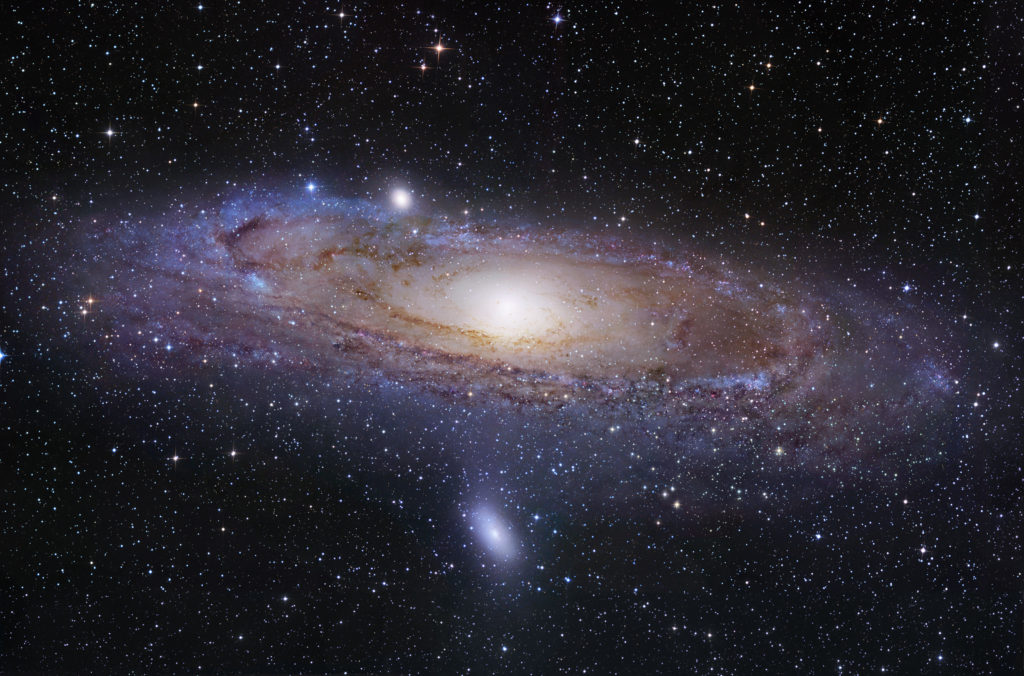A galaxy is a gigantic collection of stars that looks much like an island of stars in space. Galaxies are held together by the combined gravity of all the matter within them. This gravity also makes all the stars orbit around the center of the galaxy.
Our Sun is just one of more than 100 billion stars that make up our Milky Way Galaxy. We cannot see the entire Milky Way Galaxy because we live inside it. However, we can see many other galaxies that look similar, including the relatively nearby Andromeda Galaxy. Notice that the Andromeda galaxy is shaped like a fairly flat disk with a bright central bulge. The stars in the disk make a spiral pattern, so we say that Andromeda is a "spiral galaxy." (Some galaxies have other shapes.)
I was wondering...
Should we say "star systems" instead of "stars"?
Just as our Sun is orbited by the planets and other objects (such as moons, asteroids, and comets) that make up our solar system, other stars have their own sets of planets and/or other objects orbiting them. That is, every star is really just one part its own solar system, which we usually call a "star system" so that we don’t confuse it with our solar system. Some star systems even contain more than one star. Because stars are always a part of star systems, we might more accurately say that a galaxy is a collection of star systems rather than just of stars. However, because stars are so much larger and brighter than planets or other objects that orbit them, we only see the stars when we look at a galaxy, even with very powerful telescopes.

By carefully studying the positions and motions of stars within our Milky Way, scientists have learned that our galaxy is a spiral galaxy much like Andromeda, except the central bulge is elongated into a bar shape.
Our solar system is located about halfway out from the center of our galaxy to the edge of its disk. In case you are wondering: The disk of our galaxy is about 100,000 light-years in diameter, or 50,000 light-years from the center to the edges. Therefore, we live a little more than 25,000 light-years from the center of our galaxy.

Quiz – Ordering by Size
Note: As always, after you finish the quiz, be sure you read the feedback that explains the correct answers, to make sure you understand the reasons for these answers.
